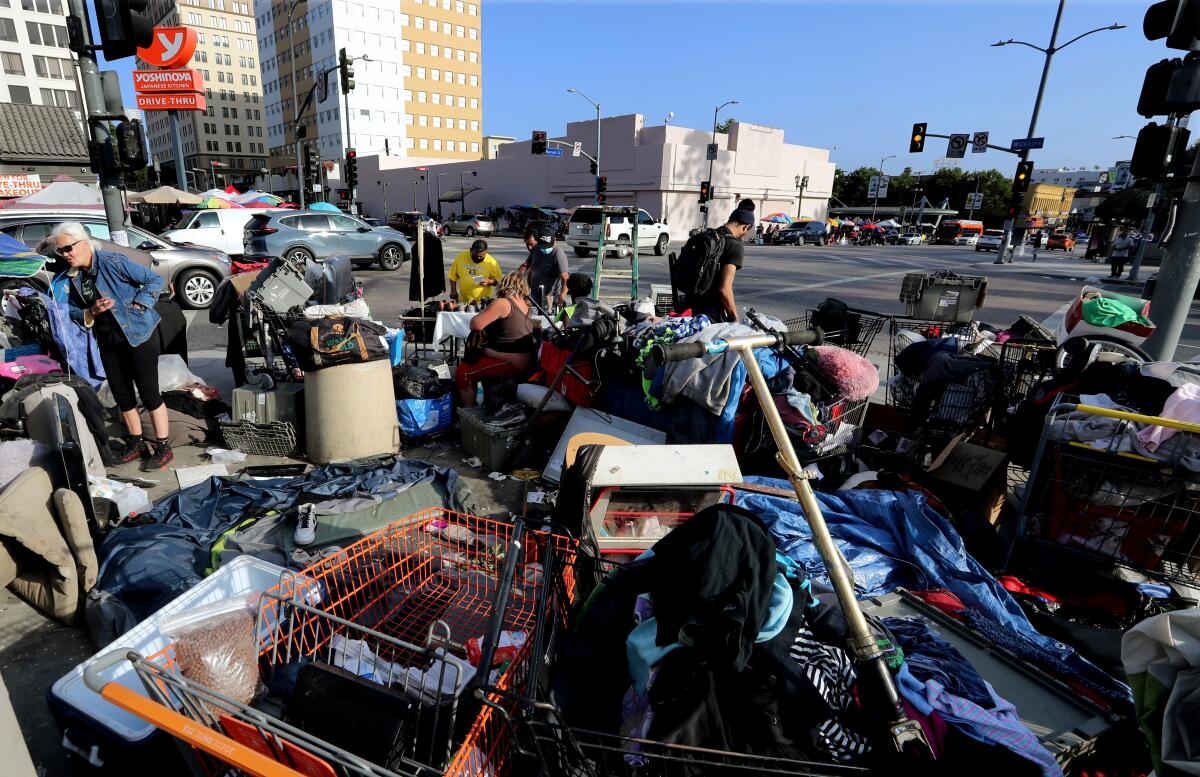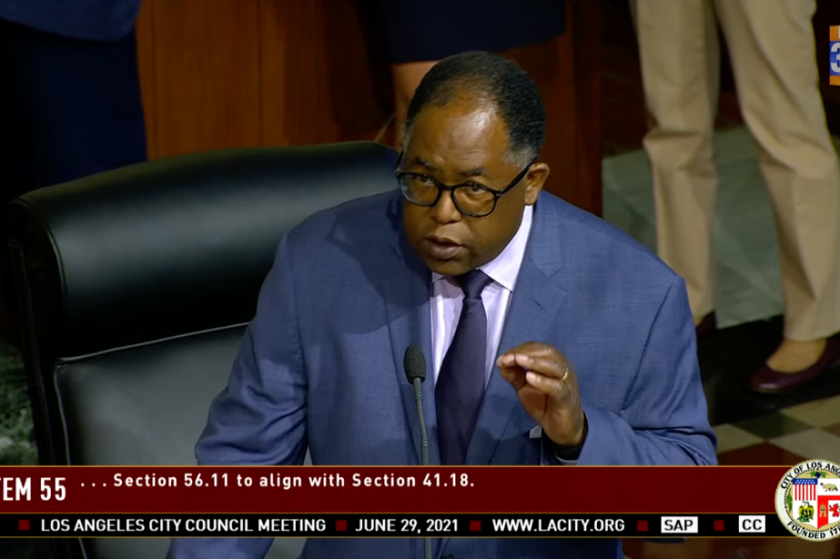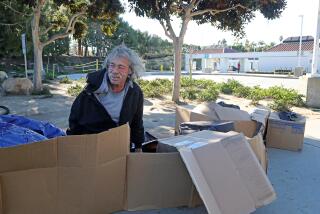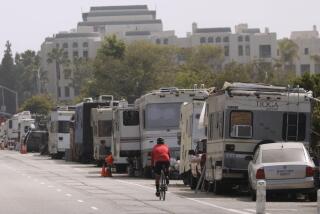L.A.’s new plan to restrict homeless camping: What you need to know

In a move that surprised some, the Los Angeles City Council is moving forward with a new anti-camping ordinance as the city facing growing pressure for more action on the homelessness crisis.
Here is a breakdown of the basics, which could be voted on as early as Thursday.
Council members are fast-tracking a measure barring people from sleeping, lying or storing possessions near parks, libraries and other public facilities.
The main points
The ordinance would:
- Allow the City Council to restrict sleeping, lying and storing possessions near a variety of public facilities, including freeways and homeless shelters
- Prohibit tents and encampments from blocking sidewalks in ways that prevent wheelchairs users from traveling on them, in violation of the federal Americans With Disabilities Act.
- Ban people from sitting, sleeping or storing property on a public street or walkway that is within five feet of a building’s usable entrance or within 10 feet of a driveway
- Require 14 days’ notice, with signs posted in an area, that camping is barred in a particular location and seek to have homeless people comply voluntarily.
- Prohibit sleeping and camping around licensed schools, preschools and daycare facilities.
- Require the city to create a “street engagement strategy” within 30 days that would limit interactions between law enforcement and homeless people except in certain cases, such as when a crime is being committed.
- Grant the council the power to prohibit camping at locations that pose an ongoing threat to public safety due to fires, violent crime or other hazardous conditions.
What backers say
On a 12 to 3 vote, councilmembers on Tuesday asked the city’s lawyers to quickly draw up a law.
Backers of the proposed ordinance described it as a humane alternative to the previous measure, saying it would limit the involvement of law enforcement and seek to have homeless people comply voluntarily, with the city relying heavily on outreach teams.
Councilman Mark Ridley-Thomas said those teams would offer overnight shelter, interim housing or permanent housing before the city enforces its anti-camping restrictions. “There are right ways and wrong ways to disrupt the status quo and improve conditions on the street,” he said.
Backers of the measure also say it will help Angelenos regain public spaces currently occupied by tents, furniture or other possessions.
“They want to be able to use their parks and their sidewalks and their libraries,” said Councilman Paul Krekorian, who coauthored the proposal. “They want to be able to go into the entrance of their business. They want to be able to know that when they pull into a parking lot, they don’t have to worry about running someone over when they’re going through the driveway.”
What critics say
Councilman Mike Bonin said the city remains short of the 20,000 beds it needs to shelter its homeless population and argued that the council should first be presented a map showing where sleeping and camping would still be allowed.
“I don’t want people living in our parks. I don’t want people living in bike lanes,” said Bonin, who represents coastal neighborhoods. “But if we’re going to say no to that, then we need to be saying where people can go.”
Attorney Carol Sobel, a longtime advocate for the rights of homeless people, also opposes it.
“If they found people safe places to live that didn’t warehouse them, then they wouldn’t need these ordinances,” she said. “But they are so focused on making homelessness a criminal matter that they cannot think about positive ways to address this issue.”
What’s next
Attorneys for the city are now drawing up the proposed law, which is expected to face another vote on Thursday.
Unless Thursday’s vote is unanimous, the proposed ordinance would require a second vote. The council’s next meeting would occur at the end of July.
More to Read
Sign up for Essential California
The most important California stories and recommendations in your inbox every morning.
You may occasionally receive promotional content from the Los Angeles Times.













